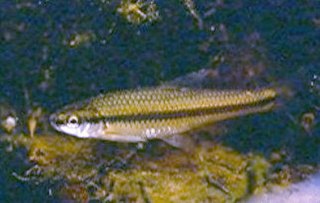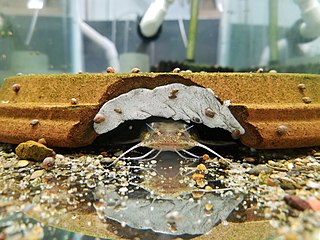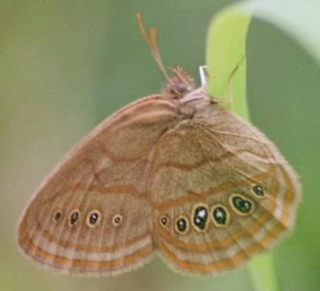 W
WThe Banker horse is a breed of feral horse living on barrier islands in North Carolina's Outer Banks. It is small, hardy, and has a docile temperament. Descended from domesticated Spanish horses and possibly brought to the Americas in the 16th century, the ancestral foundation bloodstock may have become feral after surviving shipwrecks or being abandoned on the islands by one of the exploratory expeditions led by Lucas Vázquez de Ayllón or Sir Richard Grenville. Populations are found on Ocracoke Island, Shackleford Banks, Currituck Banks, Cedar Island, and in the Rachel Carson Estuarine Sanctuary.
 W
WThe Cape Fear shiner is a North American species of freshwater fish in the family Cyprinidae. It is endemic to the central part of the state of North Carolina in the southeastern United States, and is only found in the shallow streams of the Cape Fear River basin. The fish is small and yellow with black lips and a black stripe that runs down the middle of the fish's side. This shiner is normally found in mixed schools with other minnow species. It is unique amongst its genus because it has elongated intestines that are specifically adapted to a primarily herbivorous diet. It can breed twice a year and normally lives for only two or three years in the wild. The males and females are normally similar in appearance but become different colors in the spawning season. This species of shiner was not discovered until 1962.
 W
WThe Waccamaw killifish is a species of fish in the family Fundulidae. It is endemic to Lake Waccamaw, a lake in North Carolina, United States, and its tributaries.
 W
WThe Carolina madtom is a species of fish in the family Ictaluridae. It is endemic to North Carolina. It is a small catfish, reaching a maximum length of nearly five inches. Described in the late-1800s by ichthyologists Jordan and Meek, this fish is the only madtom that is endemic to North Carolina, as indicated by its common name.
 W
WThe magnificent ramshorn is a species of small, freshwater, air-breathing snail, a pulmonate gastropod mollusk in the family Planorbidae, the ram's horn snails. This species is endemic to the United States.
 W
WThe Neuse River waterdog, Necturus lewisi, is a medium-sized waterdog, family Proteidae, found in two rivers of North Carolina.
 W
WPatera clarki nantahala, the noonday globe, is a subspecies of Patera clarki, a land snail in the family Polygyridae. It is endemic to North Carolina in the United States.
 W
WThe Saint Francis' satyr is an endangered butterfly subspecies found only in the US state of North Carolina. First discovered in 1983, it was first described by David K. Parshall and Thomas W. Kral in 1989 and listed as a federally endangered species by the US Fish and Wildlife Service in 1994. It is a subspecies of N. mitchellii and is restricted to a single metapopulation on Fort Bragg military base in Hoke and Cumberland counties. The other subspecies, Mitchell's satyr, is also federally endangered.
 W
WThe Tar River spiny mussel or Tar River spinymussel, scientific name Elliptio steinstansana, is a species of freshwater mussel in the family Unionidae, the river mussels. This species is endemic to North Carolina in the United States. It is now limited to less than 5% of its probable historical range and it is expected to become extinct without significant human intervention, such as reintroduction. This is a federally listed endangered species of the United States.